Balances
Ardha Chandrasana
Half Moon
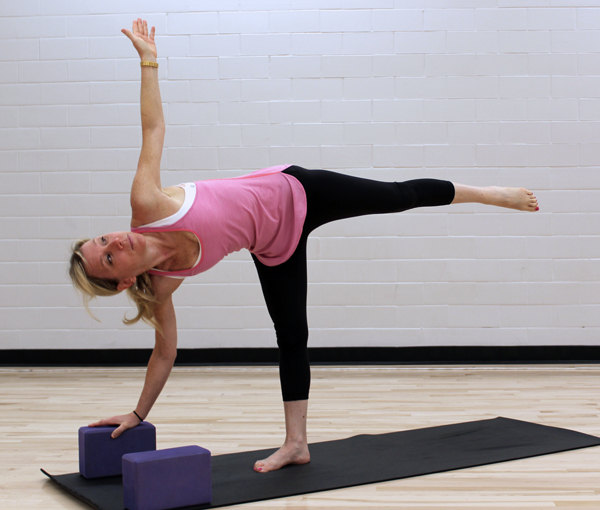
Alignment Cues:
- supporting leg points directly forward and is straight or very slightly bent
- feel as if you are leaning your back flat against a wall behind you
- reach outward with your “spokes” (bottom foot reaches down, raised foot reaches back, top hand reaches up, bottom hand reaches down, top of the head reaches forward
- can also be practiced with no weight on the bottom hand (hand floats off the floor)
Drishti: upward at the top hand (unless that bothers the neck, in which case you can gaze straight out or even down at the supporting leg)
Strengthens: muscles of the supporting leg, obliques
Garudasana
Eagle
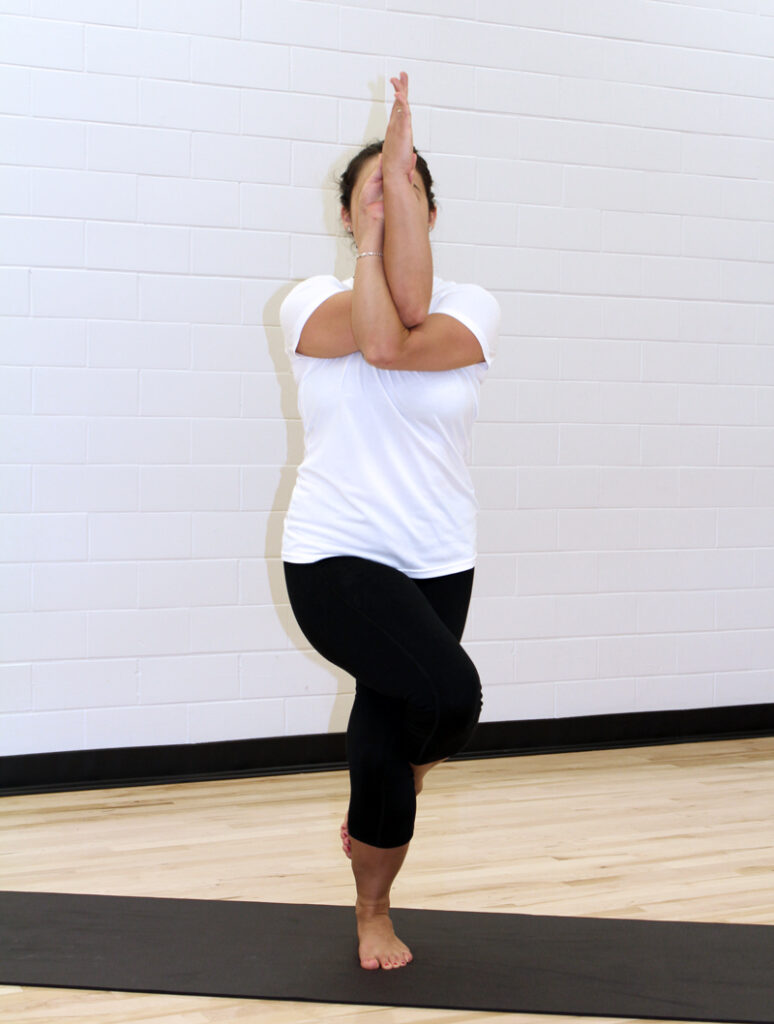
Alignment Cues:
- supporting foot is straight forward and spreading wide on the floor
- top leg may cross fully and hook the foot behind the calf, or you may modify by crossing just the ankle over the thigh of the standing leg
- keep the standing leg bent
- engage the low belly so the tailbone reaches down
- hips remain square to the front (both hip bones point forward)
- pull the elbows up and away from the chest to spread the scapula wide across the back
- arms can be modified into a “hug” position if they do not wrap
Drishti: straight forward (may be looking into arms)
Strengthens: muscles of the supporting leg, and abdominal muscles (working as stabilizers)
Stretches: upper back
Natarajasana
Dancer
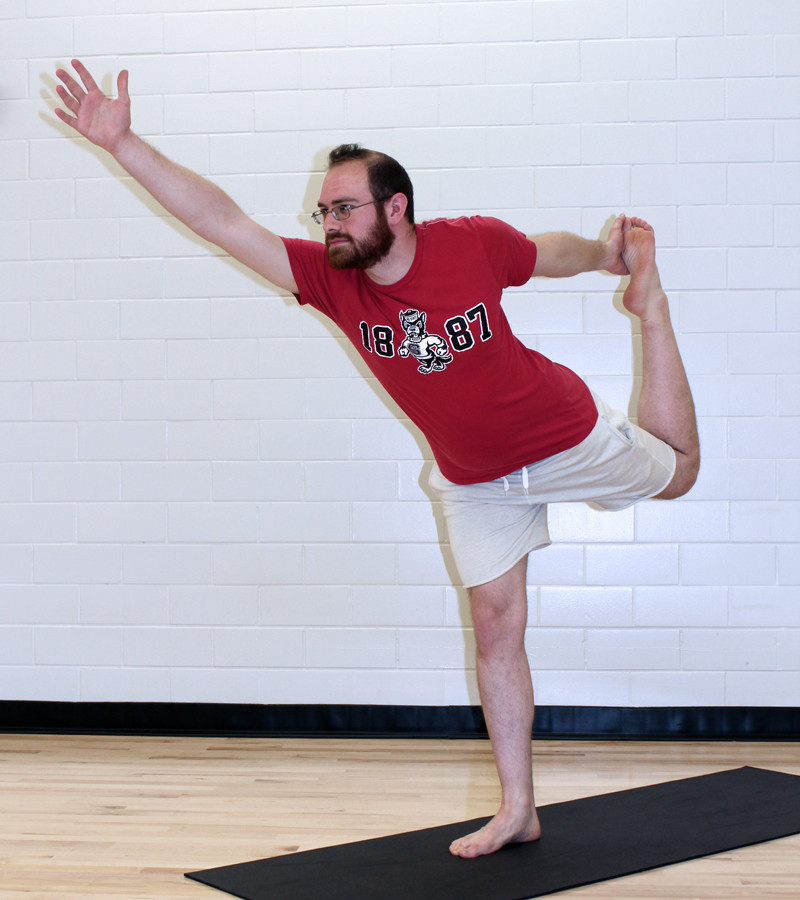
Alignment Cues:
- supporting leg points straight forward
- hips stay square to the front (there is a tendency to lift the hip of the lifted leg – keep that hip bone reaching forward)
- reach for the arch side of the back foot (thumb near the big toe)
- press the back foot into your hand as you lift the thigh (foot reaches away from buttocks)
- keep the chest lifted and pointing forward (do not drop chest towards floor)
Drishti: straight forward
Strengthens: muscles of the supporting leg, hamstrings of the lifted leg, abdominals (wokring as stabilizers)
Stretches: hip flexors and quadriceps of the lifted leg, chest, sometimes shoulders and thoracic spine
Padangusthasana
Tip Toe Pose (Toe Stand)
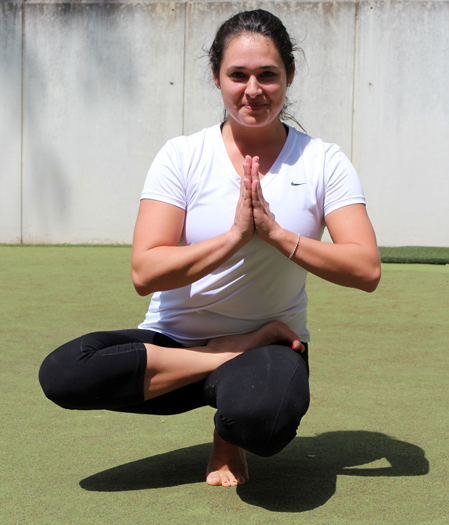
Alignment Cues:
- connect sit bone to heel in the supporting leg
- be sure knee of the supporting leg stays pointing forward
- keep weight balanced over teh big toe and second toe on the supporting leg
Drishti: straight forward
Strengthens: muscles of the supporting leg, abdominals (working as stabilizers)
Stretches: toes of the standing leg, gluteals of the lifted leg
Parivrtta Ardha Chandrasana
Revolved Half Moon
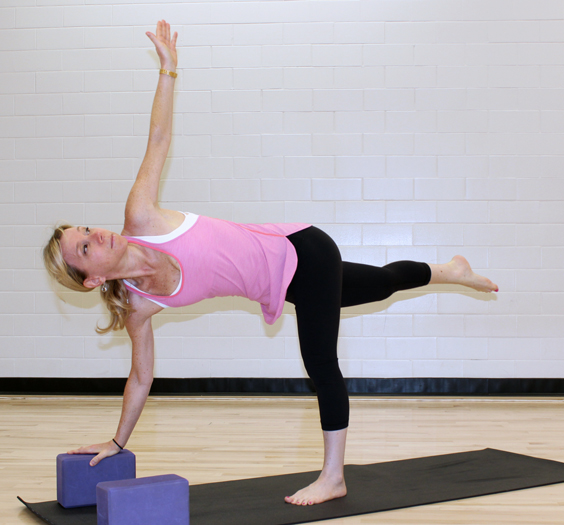
Alignment Cues:
- supporting leg points directly forward and is straight or very slightly bent
- reach outward with your “spokes” (bottom foot reaches down, raised foot reaches back, top hand reaches up, bottom hand reaches down, top of the head reaches forward
- can also be practiced with no weight on the bottom hand (hand floats off the floor)
- hips stay level to the floor
Drishti: upward at the top hand
Strengthens: muscles of the supporting leg
Stretches: muscles surrounding the torso (in the twist)
Svarga Dvijasana
Bird of Paradise
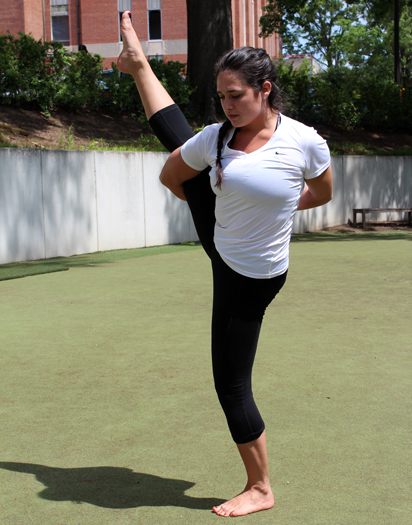
Alignment Cues:
Drishti:
Strengthens:
Stretches:
Urdhva Prasarita Eka Padasana
Standing Split
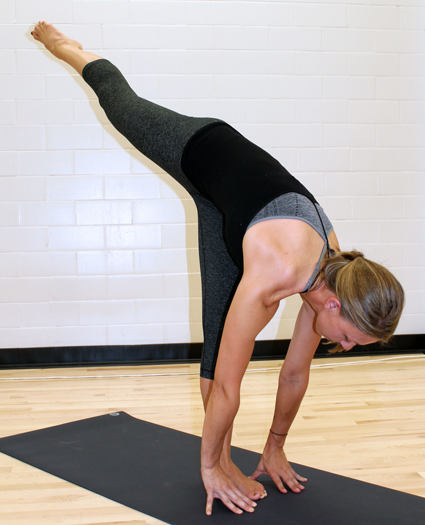
Alignment Cues:
Drishti:
Strengthens:
Stretches:
Utthita Hasta Padangusthasana
Extended Hand to Big Toe Pose
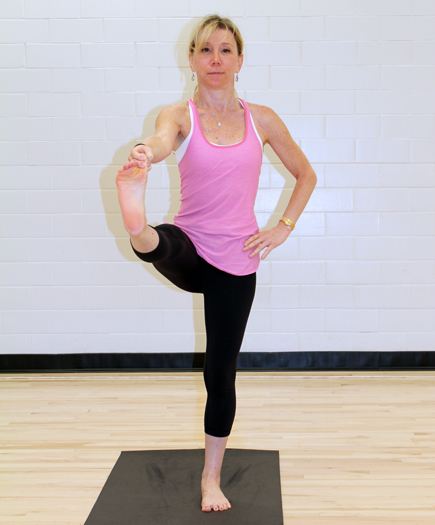
Alignment Cues:
Drishti:
Strengthens:
Stretches:
Virabhadrasana III
Warrior III
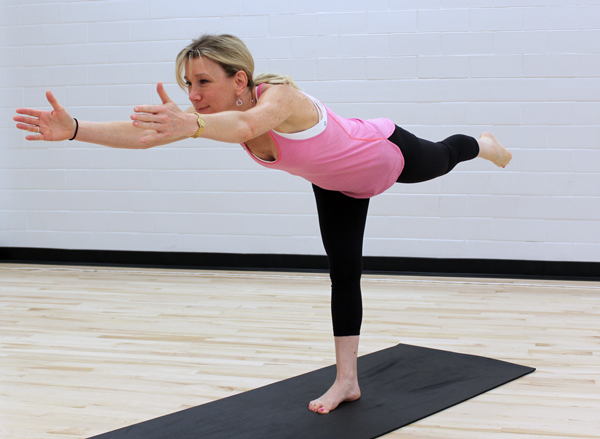
Alignment Cues:
- supporting leg points directly forward and is straight or very slightly bent
- reach backwards with the raised foot (toes point down towards the floor)
- hips stay level to the floor (there is the tendency to let the hip of the raised leg rise – keep this hip bone reaching down to maintain it level with the other)
- a variety of arm positions may be used with this posture
Drishti: most typically downward towards the floor, but can also be forward to the horizon (as shown in the photo)
Strengthens: muscles of the supporting leg, back muscles (erector spinae)
Vrksasana
Tree

Alignment Cues:
- foot of the raised leg can be on the thigh, calf, or ankle of the supporting leg (anywhere except the knee)
- press the foot into the side of the supporting leg and press the leg into the foot
- hips stay level and facing forward
- rotate the raised leg out from the hip joint to point the knee out to the side
- a variety of arm positions can be used in this posture
Drishti: straight forward (strong but easy gaze)
Strengthens: muscles of the supporting leg, abdominals (working as stabilizers)